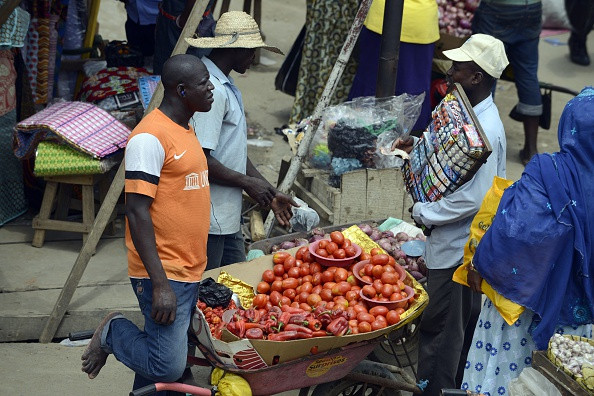African fintech providers should focus more on SMEs
So says Tunde Kehinde, co-founder and Managing Director of Lidya and co founder of Africa Courier Express.

Small businesses have a central role in Africa's development. Small and medium-sized enterprises (SMEs) may contribute to over half of GDP, but they remain perennially underserved by financial institutions. Without access to critical capital, they continue to be stunted, with limited capacity to grow. Africa requires a more than 300% increase in credit to close this financing gap.
Traditional African banks are unlikely to meet this demand due to the conservative credit assessment practices and the high costs of establishing physical bank branches outside of the cities. However, the growth of fintech companies across the continent opens the door to a new source of finance.
Although fintech providers in Africa have focused their efforts on consumer lending, their technology should be better leveraged to improve services for the SMEs that will help more Africans join the middle class and fuel demand for goods and services. To do so, fintech providers should pave the way to innovative lending by harnessing their low-cost model to support SMEs as drivers of Africa's future.
Fintech providers are best-placed to lead in SME lending because they are more capable of looking at people in the context of their transactions. Technology offers new means to process and analyse data—an asset in Sub-Saharan Africa, one of the world's largest data deserts. According to the Data for African Development Working Group, between 1990 and 2009, only one Sub-Saharan country had data on all 12 MDG indicators. Governments struggle to maintain accurate information of citizens, and the challenge is no different for banks.
Although the first principle of banking is "know your customer," difficulty in establishing ability to pay is a challenge to expanding access to finance across the region. To deepen financial inclusion, African countries can't rely on standard methods of assessing creditworthiness. Instead, financial institutions — particularly the fintech providers at the vanguard of Africa's digital revolution — must dig deep to find the data that isn't on a paper trail. By relying on metrics other than income, fintech companies can see that clients that might have been cast aside as risky in the past are, in fact, capable of repaying loans. Through semi-automated risk assessments, fintech providers can analyse everything from social media activity to vendor receipts to establish creditworthiness.
In addition to automation, fintech providers can maximise the benefits of operating without costly physical branch networks to deliver services quickly and at low-cost. Through digitally-based platforms, SMEs can complete applications in hours without the necessity of an in-person visit. In China, for example, WeChat has been a pioneer. The messaging service-cum-fintech app allows users to apply for uncollateralised loans of up to $30,000 and get a decision in under a minute. Similar technologies are now spreading across Africa, dramatically transforming access to capital.
South African start-up Jumo, for example, uses algorithms to analyse how a person's smartphone activity, from airtime to mobile money usage, and rate their creditworthiness. Today, funds can be made available in less than a week, compared to the average three-to-four week waiting time for loan disbursement in countries like Nigeria. Moreover, because of fintech's low-cost structure model, fintech providers have a larger cushion for credit losses and can pass on these savings in the form of lower interest rates for SMEs. Without the burdens of legacy IT systems, African fintech companies can also be agile enough to respond to the rapidly changing entrepreneurial environment, and better adapt to meet customer expectations of a 21st-century bank.
Although there is a vacuum in the market for SME financing, fintech providers cannot — and should not — go at it alone. Fintech providers may fill a much-needed role as financial intermediaries, but numerous aspects of the payment processing chain require the engagement of licensed, regulated banks. Partnership can be a win-win for fintech providers seeking to grow sustainably and rapidly acquire customers, and for banks searching for innovative ways to profitably service customers at the bottom of the pyramid.
Fintech companies can also partner with wholesale suppliers and telecoms companies to circulate information about services that are available to SMEs. In the end, these partnerships benefit everyone: as SMEs grow, they will eventually be able to get loans from traditional banks, provide suppliers with more business, and use more of the business services that telecoms and government agencies provide. In Lagos' sprawling Ijesha market, for example, giving fishmongers access to a loan of just 200,000 naira (nearly $600) can provide enough capital to sell wholesale seafood to hotels and restaurants.
SME lending remains an underexplored area in the growing fintech industry around the world, but using technology can help to address the blind spot. Fintech's data-driven model allows for a holistic approach to evaluating business customers that improves lenders' ability to assess repayment prospects. Thanks to the ever-growing numbers of users that can be accessed through mobile technology, fintech providers have drastically reduced expenses and found ways to focus on delivering the customer service SMEs need to help grow.
With a more and more robust tech infrastructure in place, it is important that fintech companies pursue partnerships that help to create a broader business ecosystem. If used wisely, a well-established, technology-based ecosystem can expand its reach and react to the changing needs of companies moving up the growth ladder. If fintech focuses more of its efforts on SME lending, everybody wins.
Tunde Kehinde is co-founder and Managing Director of Lidya and co founder of Africa Courier Express.
© Copyright IBTimes 2025. All rights reserved.





















